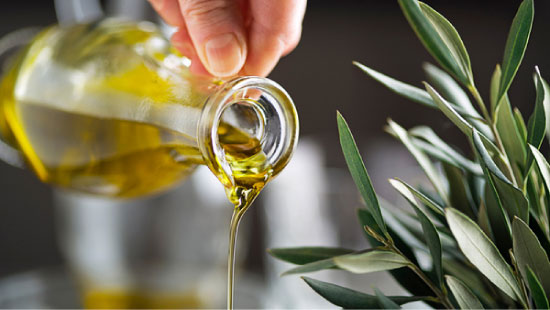How To Choose Extra Virgin Olive Oil?
1. You have to only buy olive oil labeled extra virgin. Of course this is not a guarantee that the olive oil will be the best, but at least it will probably not be among the worst.
2. You have to read the label of olive oil. You can probably figure out enough to recognize harvest and “use by” dates. The finest producers always put the harvest date proudly on their olive oil. The use-by date can be a little deceptive since it is usually 2 years from bottling, rather than from harvest.
3.You must look for a dark bottle. Extra virgin olive oil has to be put in the dark bottle in order to be protected from the light. You have to avoid olive oil in a clear glass bottle. Light is the great enemy of olive oil and the olive oil inside will likely have lost most of its flavor and aroma. Look for extra virgin olive oil in dark glass bottles or opaque tins.
4.You should know the term “cold extracted”. Extra virgin olive oil must be accomplished with no added heat (at ambient temperatures no higher than 27 °C)
5.Extra virgin olive oil does not improve with age. Fresher is better. If you have an opportunity to test out an olive oil before buying it, do it. If it’s fresh, it should smell and taste like fresh olives—grassy, green, and some varieties can taste fruity. If it’s rancid, you’re more likely to taste notes of crayon, or it will smell and taste like rancid walnuts.
6.Look into the polyphenol levels. If the olive oils that are distinctly bitter, and pungent in flavor, and those are the ones that are going to have higher polyphenol content.
7.Look for if olive oil is filtered or unfiltered. If you choose an filtered olive oil, it must have no sediment or cloudiness. Filtration does not guarantee quality, but it does add slightly to the shelf life.
8.Look for acidity. Extra virgin olive oils are known to have less than 0.8 % free fatty acid. Acidity for Ultra Premium Extra Virgin Olive Oil has to be below 0.3 %. The higher the acidity, the lower the quality.
9.Look for peroxide value. The maximum peroxide value for extra virgin olive oil is 20. High quality extra virgin olive oil should have a peroxide value below 12. A very low peroxide value is desirable.
10.Look for K232, K270 and DK values. For an exra virgin olive oil, these numbers have to be < 2.5, < 0.22 and < 0.01 respectively.
11.The colour of extra virgin olive oil ranges from green to yellow, with infinite intermediate shades. The greener it is the fresher and the richer in chlorophyll, a pigment that degrades with age. When the colour is yellow, it is richer in carotene, and is just as good as green extra virgin olive oil. If it’s reddish-orange it means that it has become oxidized and shouldn’t be consumed.
12.If you’re looking for a ultra premium extra virgin olive oil, you have to look for if it is “early harvest” or not. Ultra premium extra virgin olive oils are harvested early as olives are green.
13.Look for the cultivars. Cultivars is fancy terminology for the type of olive used to make the extra virgin olive oil.
